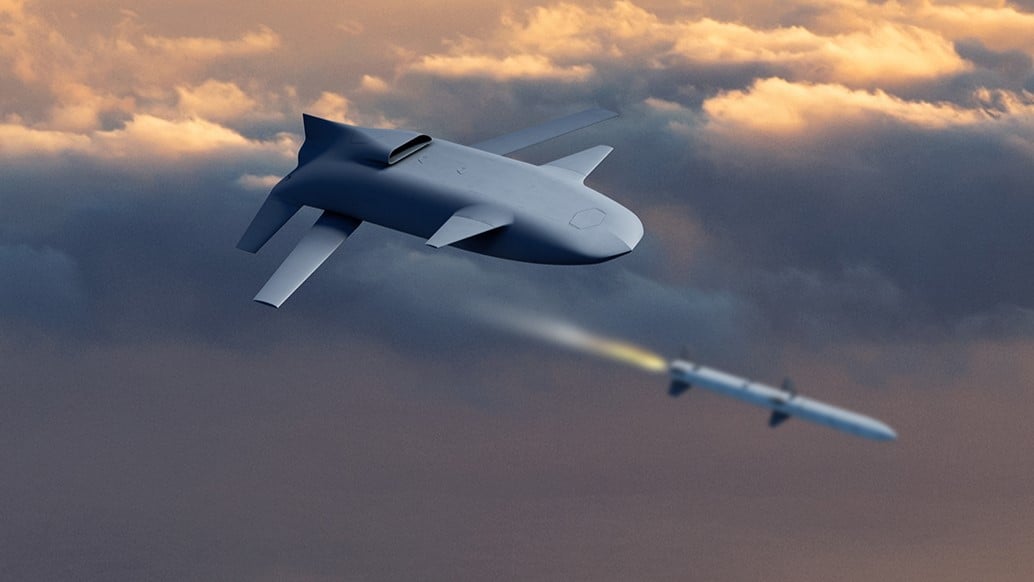
Image showing the design of the General Atomics offering for DARPA’s LongShot program. (General Atomics)
WASHINGTON — The Pentagon’s Research and Engineering office would like an additional $81 million in funding over its fiscal 2025 request, according to a copy of its Unfunded Priorities List submitted to Congress and obtained by Breaking Defense.
Services and agencies within the Pentagon are required to send unfunded priority lists to the Hill in order to show members how they would spend extra money if Congress were to grant it. Unofficially, the Pentagon often packs these lists with things that were cut during internal budget negotiations, but which the relevant offices never wanted to see left out of the full FY25 request.
R&E’s request is broken down into three programs:
DE Testing and Experimentation: By far the largest part of the request is $65 million for “DE Testing and Experimentation,” but every spot where details could be included contains the line “Description withheld. Classified topic. Materials available at higher level.” The term “DE” likely refers to directed energy, the formal name for laser weapons — a major, if ongoing, area of research for the Pentagon.
LongShot Unmanned System: The list also requests $10 million to develop a “mission systems architecture” for DARPA’s LongShot system, aimed specifically at integrating AIM-120 missiles onto the potential future drone.
Last June, contractor General Atomics was awarded a contract from DARPA for Phase 3 of its LongShot effort that could be worth up to $94 million. DARPA views LongShot — a turducken-like unmanned aircraft system dropped from a bomber or fighter that can launch missiles of its own — potentially useful for both the Air Force and Navy.
LongShot “is integrating a mission system that utilizes existing sensors and weapons architectures to pass track data to the AIM-120, enabling targeting of red platforms from the extended range,” according to the UPL.
“With the mission systems architecture, LongShot will be able to communicate with line-of-sight systems that can detect threats — such as multi-role fighters and intelligence, surveillance, and reconnaissance platforms — as well as beyond line-of-sight systems that provide targeting information to engage enemy air assets. As a result, the existing inventory of AIM-120s from 4th generation platforms will be effective at longer ranges. A mission systems architecture is critical to close the kill-chain for LongShot/AIM-120 engagements.”
Work would begin in FY25 and be finished in FY26, according to the document.
MUSIC system: The smallest pot of money requested is $6.49 million for a rapid prototype known as “Multi-Domain Unmanned Secure Integrated Communications (MUSIC).”
According to the unfunded request, this program is a “cutting-edge network architecture designed to enable seamless communication across different unmanned systems and allows the Services to fight with autonomous systems jointly,” with a focus on the Navy, Marines and Army.
“MUSIC is an essential capability for modern military operations. It enables uninterrupted communication and data exchange across diverse domains, including land, sea, air, space, and cyberspace,” the R&E office says, per the list. “MUSIC systems will be compatible with existing communication networks and platforms, ensure robust security, be resilient against disruptions, and scale seamlessly.”
the R&E office notes the off-the-shelf nature of MUSIC, breaking down the costs for this request as
Tactical Radios ($631,323), Secure 5G NTN IoT Radios ($1,794,000), NetAgility Trusted Cyber and Alchemy Service ($1,502,800), MUSIC Software Development ($2,300,000) and Computer Server and Accessories ($261,877).
“Without funding in FY25, the capability will not be available in time to meet Joint Warfighting Concept and Defense Planning Scenario time-to-conflict in INDOPACOM,” the list states.






















